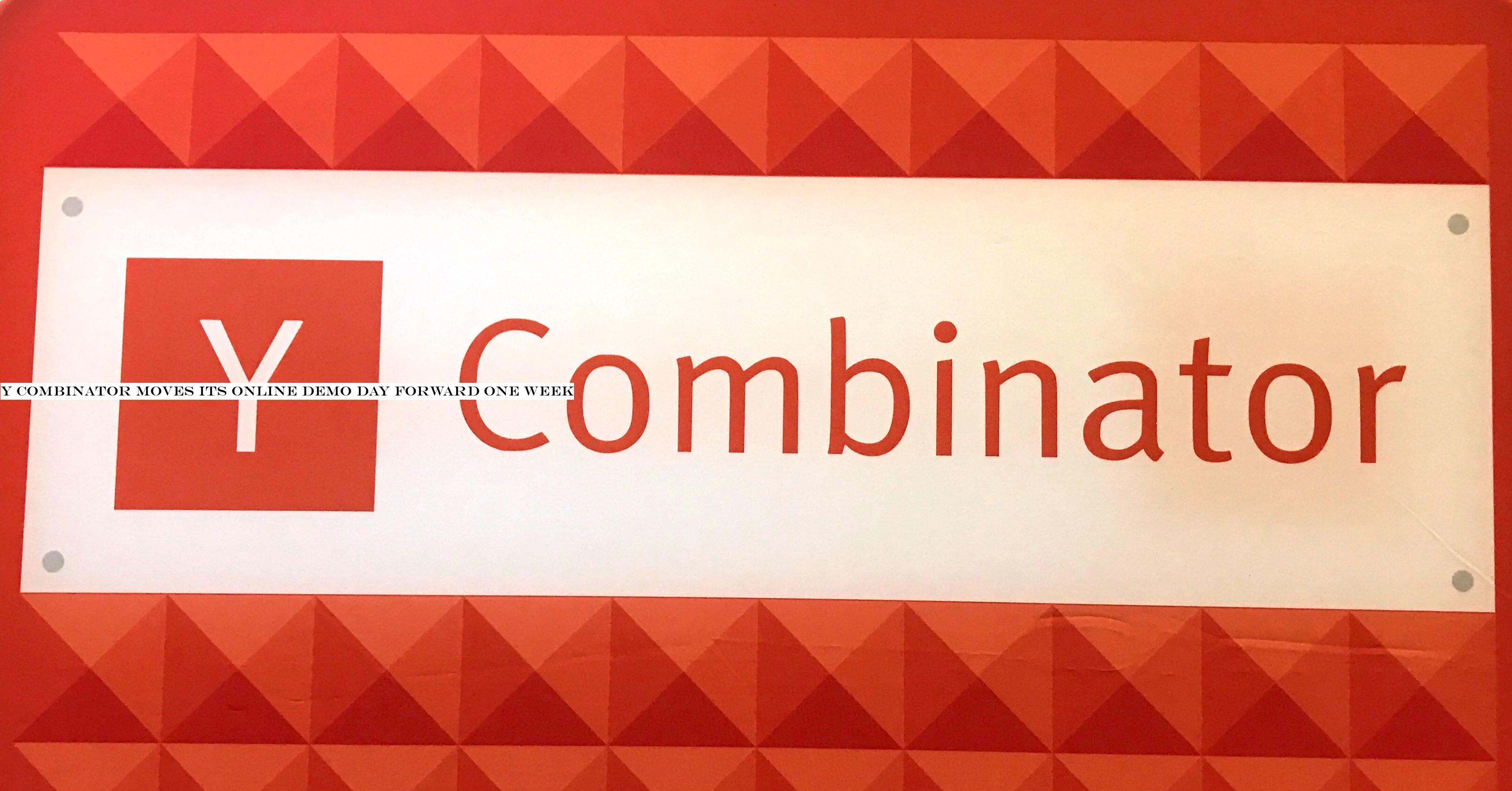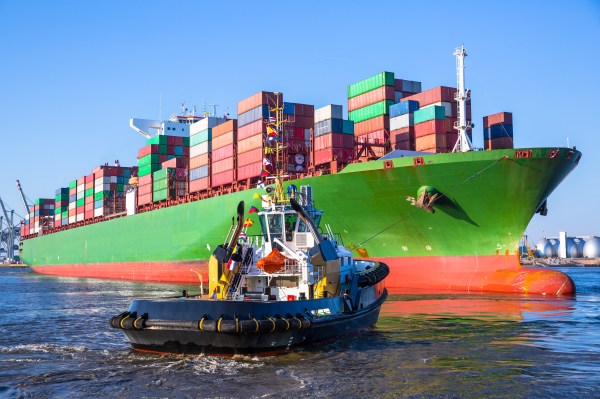Music
Trailers
DailyVideos
India
Pakistan
Afghanistan
Bangladesh
Srilanka
Nepal
Thailand
Iraq
Iran
Russia
Brazil
StockMarket
Business
CryptoCurrency
Technology
Startup
Trending Videos
Coupons
Football
Search
Download App in Playstore
Download App
Best Collections
Technology

This user complains to pilot fish that the network drive mapped to his PC has disappeared. Fish remaps it and goes on with his day.
But fish hears back from the user, who now says he can&t access a folder he used to be able to enter. That doesn&t make sense to fish, and after some back and forth, he finds that the map in the userhead needs adjusting. Hebeen trying to open a folder that he should have nothing to do with, and the folder he is looking for is one level down, in another folder but bearing the same name as the one hetrying to open.
Route your true tales of IT life to Sharky at This email address is being protected from spambots. You need JavaScript enabled to view it.. You can also subscribe to the Daily Shark Newsletter.
To read this article in full, please click here
- Details
- Category: Technology Today
The coronavirus pandemic continues to spread with no signs of abating. Over 100,000 cases have been confirmed in almost 100 countries across the globe as of this writing. Some 4,000 deaths have been reported, 80% of which occurred in mainland China.
Preventive measures taken by the public sector and by global industryare already having widespread effects. In the past several days, Italy hasofficially imposeda whole-country lockdown and in the U.S., epicenter states such asCaliforniaandNew Yorkhave declared emergency status while instituting lockdowns on high-risk districts such asNew Rochelle. Last week, the OECD cut global economic growth projections by half, and the JPMorgan Global Manufacturing Purchasing ManagerIndex (PMI) fell to its lowest level since 2009. Numerous companies including Apple and Nvidia have reported underwhelming earnings in recent quarters and have proceeded to cut their earnings guidance for the foreseeable future.
These economic impacts are in part related to disruption in demand for goods, due to quarantines and travel restrictions. However, more nefariously, economic pundits have expressed concern for supply-side disruptions: including staff productivity losses, supply-chain dysfunction, and facility closures.
According to a Dun - Bradstreet whitepaper released this week, 94% of Fortune 1000 companies have key elements of their supply chain housed directly within the epicenter of the outbreak in China. Supply-side shocks are much more difficult for central banks to contain by moves such as interest-rate cuts or financial stimulus. These typically serve to catalyze demand (through increased cash or borrowing power), but do not directly alleviate the kind of production paralysis capable of hamstringing global commerce.
How these preventive measures implicate startups
Startups are especially vulnerable to such supply-side disruptions, each of which is worth considering independently.
Decreases in staff productivity
Operating through lean organizational structures in which personnel often occupy cross-functional roles, decreases in staff productivity can create significant issues for interdependent activities at startups. The diversion of attention — due alternatively to the need to attend to personal needs (such as family caregiving, healthcare issues, or household concerns) or societal requirements (such as monitoring the development of the virus and state or federal reactions to it) — can make a cumulative impact over the days, weeks, and months of the outbreak.
The increased frequency of absences to attend to personal issues (such as individual healthcare or childcare amidst school closings) likewise presents a major challenge to fulfillment of contracts and other business obligations for startups. A CNBC survey conducted two weeks ago found that some 40% of companies had &stranded employees& facing some form of hurdle to commuting to the workplace. These figures are likely higher today.
Moreover, increased frequency of absences can be accompanied by heightened utilization of benefits (such as healthcare, sick leave, or family leave) in a short period, which startups may or may not have sufficient liquidity to support. These considerations around benefits are especially tenuous for startups in the gig economy, who may need to compensate affected employees regardless of their ability to perform tasks.
Supply-chain dysfunction
Turmoil in supply chains can bear significant consequences for startups across a diverse range of sectors, including technology and healthcare. This is especially the case given that these supply chains tend to be concentrated through only a selected group of vendors.
Since China is the worldlargest producer of industrial goods (in particular, basic parts), often at the worldlowest prices, the widespread quarantines in the region are already proving debilitating: the number of bulk freight shipments has fallen over 70% since January and some 40% of Chinatrucking capacity remains offline. And while American companies have sought to diversify away from China in recent years (partially due to political rhetoric), as the viral outbreaks spread to other major manufacturing countries (such as Vietnam, Bangladesh, and Mexico), supply chains for instrumental parts will likely face shortages, delays, and quality compromises.
In terms of services, startups often depend on regulatory, legal, and industrial collaborators for deliverables that are a prerequisite to their doing business. Disruptions in this &soft& supply chain capable of delaying essential credentialing, contracting, or data acquisition can prove incapacitating for startups. Furthermore, the proliferation of outsourcing (on the order of 14 million jobs in 2015) in service supply chains for critical tasks such as customer service and administrative workflows implies another dimension of vulnerability for service provision.
For either goods or services supply chains, to the extent that startups have relatively undiversified revenue streams — from a single or small group of contracts — these various forms of supply chain bottlenecks can be crippling (of basic fulfillment) in the short-run and compromising (of scaling and reputation) in the long-run.
Facility closures
Lastly, startups ought to consider the impact that closing and/or restricting their facilities can have on their performance.
Recent guidelines from the Centers for Disease Control (CDC) and Occupational Safety and Health Administration (OSHA) include recommendations for employers to develop &infectious disease outbreak response plans& that may require office/factory closures. Already, employers across the US are preparing for &social distancing measures& that are, overnight, converting physical workforces into virtual ones.
With the acceleration of community spread leading to diffusion of the virus out beyond US urban centers effected thus far (namely, New York City and San Francisco), more and more startups residing in neighboring suburbs may face closing their workplace.
Steps stakeholders in startups can take to provide stability
Taken together at face value, these supply-side considerations can seem overwhelming for startups already facing innumerable daily &fires& that need extinguishing. However, there are a variety of steps that CEOs, funders, and partners/clients of startups can take to inoculate themselves against the exogenous threat posed by coronavirus.
Startup CEOs ought to consider operational, organizational, and financial workarounds.
Operationally, they can take steps to prepare for a virtual workplace by establishing clear methods of digital communication and metrics to ensure productivity. They can also prepare for an &interrupted& workplace (in which employees require more time than usual for personal affairs and may be otherwise preoccupied) by embracing asynchronous workflows, laying out clear priorities for deliverables, and providing flexibility beyond standard office hours.
Organizationally, CEOs can cross-train employees and develop clear workflow protocols to insulate against staffing deficits that may arise. To fortify their organizational strategies, CEOs can identify weak points and/or major dependencies in their supply chains. In turn, they can seek to hedge against these where possible: either through delegation to additional firms or through integration internally.
Financially, to the extent possible, CEOs can shift their business models to prioritize revenue over growth in the short-run, ensuring liquidity against unexpected supply or demand shocks. This can be achieved through cost reduction or signing small-scale contracts (rather than &pursuing Moby Dick&). Alternatively, CEOs can consider raising anticipatory funding, even if in the ideal world they might defer a raise in pursuit of higher valuations.
Funders of startups are likewise well positioned to buffer against the fever state of startups. Providing leadership for early, anticipatory fundraising can support the stockpiling of dry powder to survive a prolonged siege by coronavirus (due, for example, to structural changes to the supply chain in the wake of the pandemic). It can also promote the creation of a war chest to allow startups to adapt under these abnormal circumstances.
Additionally, funders can leverage their expertise and networks to share learnings on dealing with similar challenges — therefore cultivating an ecosystem of resilience for potentially inexperienced leaders during the tumult associated with coronavirus.
Finally, partners and clients of startups have an important supporting role to play. It is very much in their own interest to ensure the vitality of startups upon which they depend: to avoid the costs of restructuring their own business models should a startup partner/vendor go defunct, and to empower their own innovation pipelines. As such, partner and client companies are well positioned renegotiate contractual terms to facilitate short-term flexibility while also ensuring long-term performance. Alternatively, they can redesign incentives and milestones in a way that can provide operational and financial security to startups for the time being without sacrificing the overall value expected in the more distant horizon.
Surviving coronavirus can bolster the immune systems of startups in the future
The coronavirus pandemic is likely to strain the capabilities of startups for the foreseeable future. Supply-side disruptions will present distinctive challenges to startups unlike those that typically crop up in a globalized economy.
Nonetheless, through keen vigilance, rapid adaptation, and comprehensive contingency planning, startups can survive the impending stress test. And in so doing, like white blood cells after a severe infection, surviving startups can develop resistance against the subsequent challenges they will inevitably face in their lifetimes.
- Details
- Category: Technology Today
Read more: How the coronavirus outbreak will stress-test startups
Write comment (96 Comments)
Just days ago, Y Combinator announced that its upcoming Demo Day event would be moving online due to &growing concern over COVID-19.& The event, previously planned to span across two days at San FranciscoPier 48 building, would instead be hosted entirely online on March 23rd.
More changes this evening: YC is shifting Demo Day forward one full week, from March 23rd to March 16th.
In a blog post on the change, Y Combinator CEO and partner Michael Seibel cites an &accelerated& pace from investors in recent days as having encouraged the move:
Over the last few days, a large number of investors have accelerated their outreach to our current batch of founders. They are moving quickly to make investment decisions, and we&re going to match their pace and accelerate our schedule by one week. YC W20 online Demo Day will now be on March 16.
On March 16, the YC Demo Day website will go live, a modified version of the website that investors and founders have used over the past five years. Through the website, investors will have access to a single-slide summary, a short description of the company, and a team bio. They can sort companies by industry and geography, and will be able to export the list of companies to a spreadsheet.
While YC initially said that the pitches each company traditionally does live onstage for Demo Day would be &pre-recorded and released to all investors at the same time,& the announcement of the sooner-than-expected Demo Day only mentions slide summaries, company descriptions, and team bios — suggesting plans might have changed a bit to accommodate the new schedule.
Y Combinator confirmed to me that the Demo Day site will not have video presentations.
- Details
- Category: Technology Today
Read more: Y Combinator moves its online Demo Day forward one week
Write comment (90 Comments)
Tesla is in talks with Nashville officials to locate a factory there that will produce its all-electric Cybertruck and Model Y crossover, according to a source familiar with the discussions.
Tesla CEO Elon Musk tweeted Tuesday evening that the company is &scouting& locations to build a new U.S. gigafactory that will produce the Cybertruck and Model Y crossover.
&Scouting locations for Cybertruck Gigafactory. Will be central USA,& Musk tweeted Tuesday. He added that the factory would be used to produce Model Y crossovers for the East Coast market. The first Model Y vehicles are being produced at its plant in Fremont, Calif.
Musk didn&t provide further information in the tweets. However, a source with knowledge of the talks said Nashville is on a short list of contenders.
Tennessee is already shaping up to be a hub of electric vehicle production. Volkswagen is spending $800 million to expand its U.S. factory in Chattanooga, Tenn. and turn it into the companyNorth American base for manufacturing electric vehicles. Electric vehicle production at the Tennessee site will begin in 2022, VW said at the time. Meanwhile, Nissan has been producing the Nissan Leaf in Smyrna since 2013.
Tesla assembles its Model S, Model X and Model 3 vehicles in Fremont, Calif. at a factory that was once home to GM and ToyotaNew United Motor Manufacturing Inc (NUMMI) operation. Tesla acquired the factory in 2010. The first Model S was produced at the factory in June 2012.
Tesla turned its efforts to battery production and in June 2014 broke ground on its first &gigafactory& on land near Reno, Nevada. The massive structure, which has surpassed. 1.9 million square feet, is where Tesla produces battery packs and electric motors for its Model 3 vehicles. The company has a joint venture with Panasonic, which is making the lithium-ion cells.
Tesla also has a &gigafactory 2& in Buffalo, New York where itproducing solar cells and modules.
In 2018, Tesla struck a deal with the Chinese government to build a factory in Shanghai, a milestone for Musk, who has long viewed China as a crucial market. The China factory started producing the Model 3 late last year. The first deliveries began in early January.
Tesla is now clearing land for another factory near Berlin. Once complete, this German factory will produce the Model 3 and Model Y for the European market.
The story has been updated to reflect new information about the possible location of the factory.
- Details
- Category: Technology Today
Read more: Tesla is eyeing Nashville for Cybertruck gigafactory
Write comment (94 Comments)The number of COVID-19 cases in the U.S. crossed 1,000 on Tuesday as President Donald Trump met with the nationlargest insurers and members of his cabinet to discuss how to pay for treatment and lessen the financial blow of the diseasespread.
With the nationhealthcare apparatus beginning to get a better understanding of the proliferation of the virus that causes COVID-19 within its borders, efforts have shifted fully from containing the diseasespread to stopping the contagion from getting worse.
&What we would like the country to realize is that as a nation we can&t be doing the kinds of things we would be doing a few months ago,& said Dr. Anthony Fauci, head of the National Institute of Allergy and Infectious Diseases, during the daily briefing from the PresidentCoronavirus Task Force. &It doesn&t matter if you&re in a state that has no cases or one case, you have to start taking seriously what you can do now, if and when the infections will come, and they will come.&
The government and private testing facilities Quest and LabCorp are quickly distributing new test kits, with the expectation that 5 million will be made available by the end of the week. The availability of testing means that more cases will be diagnosed and efforts will be made to limit the spread in the new clusters as they&re identified.
However, that rollout might be hampered by a potential shortage of a critical component of the tests — the &RNA extraction& kits, first reported by Politico earlier on Tuesday.
&RNA extraction is the first step in being able to perform& a COVID-19 test, Michael Mina, associate medical director of molecular diagnostics at Brigham and WomenHospital in Boston told Politico. &If we cannot perform this step, the [coronavirus] test cannot be performed.&
More roadblocks to testing could limit the identification of clusters of the virus that causes COVID-19 and stop governments from taking the kinds of dramatic action that medical professionals think could be necessary to mitigate the spread of the virus.
&When you have community spread you&re going to ratchet up the kinds of mitigations that you have,& said Fauci. &Everyone should be saying all hands on deck. This is what we need to be doing.&
In New York state thatmeant establishing a containment zone around New Rochelle, a city that has been the focal point for the diseasespread in the region.
That mitigation strategy looks like an extreme version of the steps that Dr. Scott Gottlieb, the former Food and Drug Administration chief recommended over the weekend.
Meanwhile, more companies made calls for remote work for their employees and took steps to shield their workers from financial hardship caused by the disease — either through illness or because of the mitigation strategies imposed by the companies themselves. Their commitments come as President Trump and his economic advisors move forward with a stimulus package to boost the economy and provide a safety net for companies that are paying for workers& time off.
Earlier in the day in a briefing at the White House, Vice President Mike Pence outlined the steps that insurance companies would be taking to ensure that patients receive the treatment they need.
&All the insurance companies here — either today or before today — have agreed to waive all copays on coronavirus testing and extend coverage for coronavirus treatment in all of their benefit plans,& Vice President Pence said. Last week the government said that Medicare and Medicaid beneficiaries would have their testing and treatment covered.
&They&ve also agreed to cover telemedicine so that anyone, particularly among the vulnerable senior population, would not feel it necessary to go to a hospital or go to their doctor,& said Pence. &They&ll know that telemedicine is covered.&
And for tech companies like Instacart, Postmates, Alphabet, Microsoft, Amazon, Salesforce, and Facebook, which have all committed to paying for hourly workers sickened by the virus or who have lost work due to office closures, the Federal government may provide some financial assistance (not that the tech companies need it).
Following up on the commitment made yesterday, Director of the United States National Economic Council Larry Kudlow said at Tuesdaybriefing that the administration is putting together a proposal for a payroll tax cut and tax deferrals for small and medium-sized businesses who are impacted by the spread of COVID-19.
Technology companies and the billionaires that own them are also chipping in to help local communities and finance initiatives looking for new diagnostics to identify the disease and treatments for the sick.
Earlier today, Amazon announced a $5 million initiative to help local businesses affected by the outbreak of COVID-19 in Seattle, while the Gates Foundation committed $50 million to a $125 million effort to develop treatments.
Still, executives at startups operating clinics in geographies affected by the virus that causes COVID-19 are saying that the infrastructure is not yet in place to adequately and effectively diagnose and treat the disease.
&Testing isn&t being done widely,& said one executive at a startup that runs a network of clinics and urgent care centers. &The supplies in the country are just very limited right now.&
- Details
- Category: Technology Today
Read more: As national COVID-19 cases top 1,000, insurers waive treatment fees and US preps stimulus
Write comment (97 Comments)
Hitachi Vantara, the wholly owned subsidiary of Hitachi that focuses on building hardware and software to help companies manage their data, today announced that it has acquired the assets of Containership, one of the earlier players in the container ecosystem, which shut down its operations last October.
Containership, which launched as part of our 2015 Disrupt New York Startup Battlefield, started as a service that helped businesses move their containerized workloads between clouds, but as so many similar startups, it then moved on to focus solely on Kubernetes and helping enterprises manage their Kubernetes infrastructure. Before it called it quits, the companyspecialty was managing multi-cloud Kubernetes deployments. The company wasn&t able to monetize its Kubernetes efforts quickly enough, though, the company said at the time in a blog post that it has now removed from its website.
&Containership enables customers to easily deploy and manage Kubernetes clusters and containerized applications in public cloud, private cloud, and on-premise environments,& writes Bobby Soni, the COO for digital infrastructure at Hitachi Vantara. &The software addresses critical cloud native application issues facing customers working with Kubernetes such as persistent storage support, centralized authentication, access control, audit logging, continuous deployment, workload portability, cost analysis, autoscaling, upgrades, and more.&
Hitachi Vantara tells me that it is not acquiring any of Containershipcustomer contracts or employees and has no plans to keep the Containership brand. &Our primary focus is to develop new offerings based on the Containership IP. We do hope to engage with prior customers once our new offerings become commercially available,& a company spokesperson said.
The companies did not disclose the price of the acquisition. Pittsburgh-based Containership only raised about $2.6 million since it was founded in 2014, though, and things had become pretty quiet around the company in the last year or two before its early demise. Chances are then that the price wasn&t all that high. Investors include Birchmere Ventures, Draper Triangle and Innovation Works.
Hitachi Vantara says it will continue to work with the Kubernetes community. Containership was a member of the Cloud Native Computing Foundation. Hitachi never was, but after this acquisition, that may change.
- Details
- Category: Technology Today
Read more: Hitachi Vantara acquires what’s left of Containership
Write comment (98 Comments)Page 1276 of 1444

 10
10





